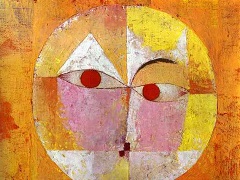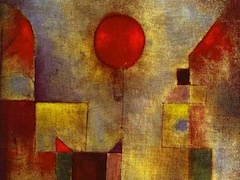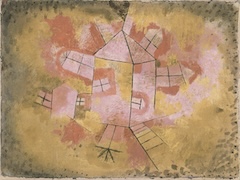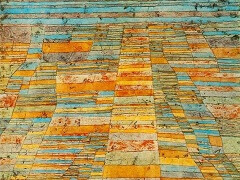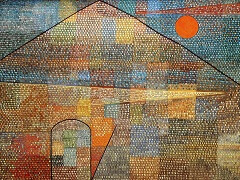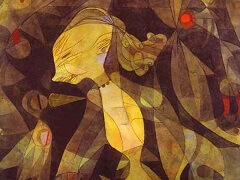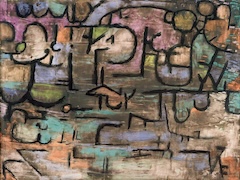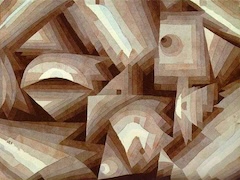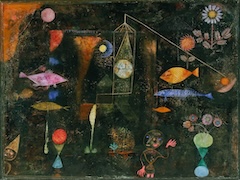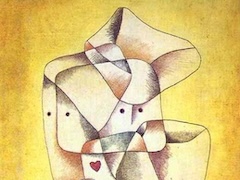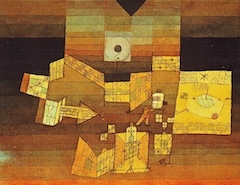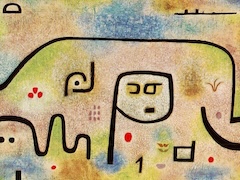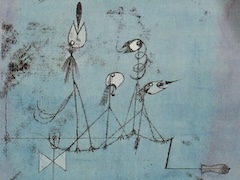Fire in the Evening, 1929 by Paul Klee
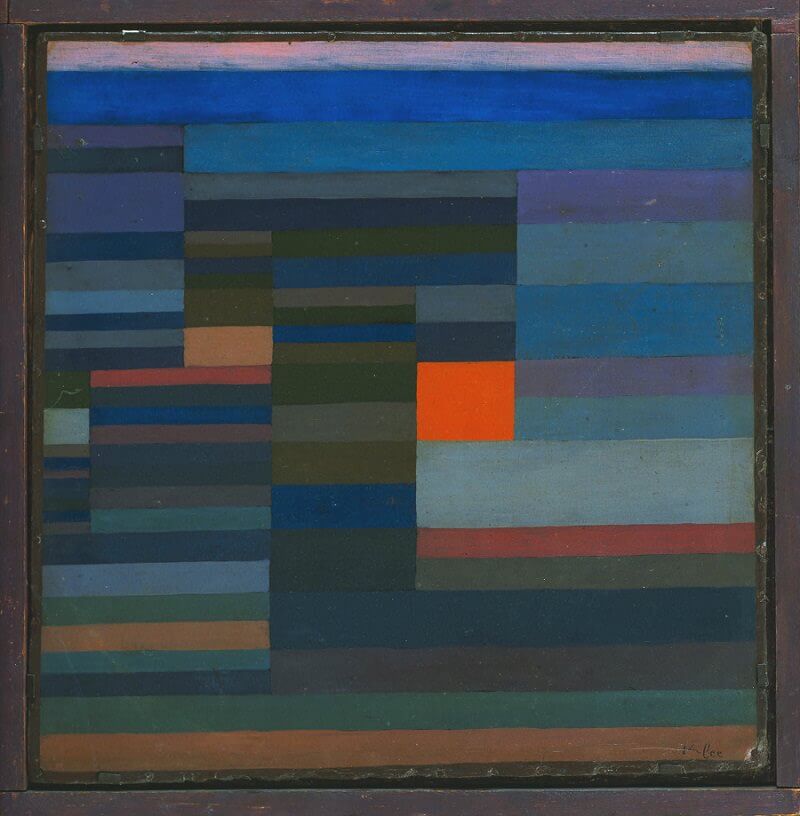
A red opaque rectangle stands out among bands of muted browns, greens, violets, and blues, which dynamically interact to suggest built structures or geographic formations. Klee's trip to Egypt in the winter of 1928 - 29 inspired a number of striated compositions, a response in part to the stratified cliffs of the Nile Valley and the long strips of tilled fields he saw there. These works "moved far from Nature," he said, "and found their way back to reality." While the work is apparently abstract, the variation within the simple formal palette of line and color constructs depth and space and even evokes a fire aflame in a desert at day's end.
In Fire in the Evening the vertical intersections produce not only halving of the strata, but also have the power to release a doubling of the interval. The density movement encounters an expansionist movement, and the tension is released again. Congruence of mass and weight is largely abolished; the largest surfaces do not always show the lightest tones. The pure, burning red is the greatest magnet for the eye and stands out against the dominant echoes of broken colour. The composition of this work recalls Klee's lecture at the Bauhaus on December 12, 1921,
A Sense of Equilibrium, an element of artistic creation...When the base widens, the horizontal widens with it at the expense of the vertical. A very considerable relaxation occurs then, an epic moment in relationship to the dramatic character of the vertical. Which obviously does not exclude an evalu-ation of the thrusts from each side of the axis. The vertical is always present! The weight of the forces is only excluded at the moment the diagonal disappears and the balance is immobilized, as, for example, in the case of the most primitive rhythm of the structure in which only horizontals or verticals are present.

